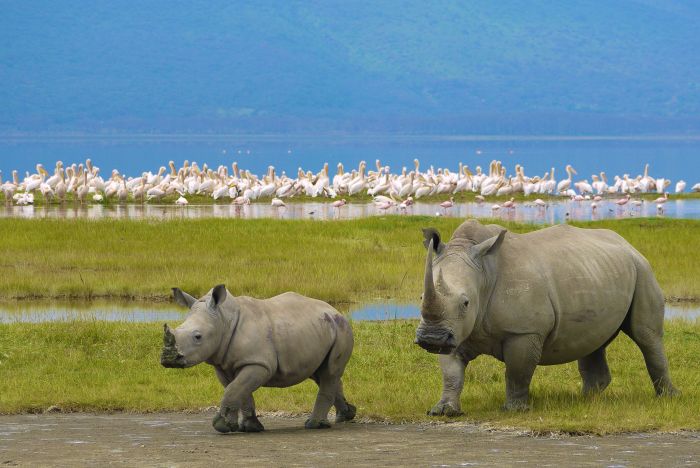Scroll for more
The Ngorongoro Crater is a wildlife haven in northern Tanzania. It is both a breath-taking sight and an extraordinary place. The great buttressed slopes of the Ngorongoro Crater lies at the south-eastern edge of the Serengeti. Nearly 3 million years ago, Ngorongoro towered alongside Kilimanjaro as one of the highest peaks in Africa. Now all that remains is the largest intact volcanic caldera in the world, at 18km wide.
A steep 'wall' of thick atmospheric forest surrounds the rim of the crater. And from this rim you look down onto a natural amphitheatre, 260 sq km in size. The mineral-rich crater floor is host to an unbelievably high concentration of game, with water being provided by Lake Magadi. So naturally most of the game have no reason to leave.
It is understandable that an Ngorongoro safari remains virtually a ‘must’ on anyone’s first safari to Tanzania. However this popularity has naturally brought its own issues. Somehow the lions continue to hunt in complete disregard for the safari vehicles following them. But sometimes it is more difficult for the visitor to ignore the game-viewing crowds.

The Tanzania wildlife authorities have tried to limited access to the Ngorongoro Crater by increasing park fees, but this has not had much effect. (The Ngorongoro crater is en route to the Serengeti so it is natural that people will want to visit.) You will have excellent game-viewing on your Ngorongoro safari. But it will not be an exclusive experience!
So, at Cedarberg Africa, we aim to combine a visit to the Ngorongoro crater with a greater focus on untrammelled wilderness elsewhere on your Tanzania safari.

Back to main Tanzania safari pages
